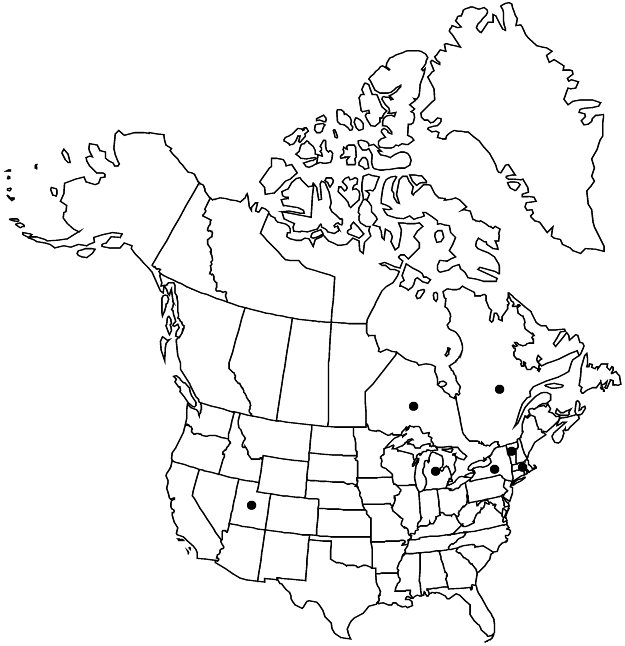Difference between revisions of "Sedum hispanicum"
Cent. Pl. I, 12. 1755 ,.
FNA>Volume Importer |
FNA>Volume Importer |
Revision as of 20:29, 24 September 2019
Herbs, annual, tufted, glabrous or scattered glandular-hairy. Stems erect or ascending, simple or much-branched, (glandular-hairy), not bearing rosettes. Leaves alternate, ascending, sessile; blade green, sometimes glaucous, linear to oblong, semiterete or ± laminar, 4–20 × 1–2 mm, base not spurred, not scarious, apex obtuse, (surfaces usually glabrous or, rarely, glandular-hairy). Flowering shoots spreading or erect, simple, 5–15 cm, (glabrous or with scattered glandular hairs); leaf blades linear to oblong, base not spurred; offsets not formed. Inflorescences lax to ± dense cymes, 2–8-flowered or flowers solitary, 2–4-branched; branches not recurved, not forked; bracts similar to leaves, smaller. Pedicels to 0.5 mm. Flowers 5–9-merous; sepals erect, connate basally, green, broadly triangular, equal, ca. 2 × 1 mm, apex acute, (glandular-pubescent); petals spreading, distinct, white with pinkish midvein, lanceolate, not carinate, 4–5(–7) mm, apex narrowly acuminate; filaments white; anthers dark purple; nectar scales white, spatulate-quadrate. Carpels stellate-spreading in fruit, connate basally, white or pale pink. 2n = 40.
Phenology: Flowering spring–summer.
Habitat: Rocks and waste places
Elevation: 0-1000 m
Distribution

Ont., Que., Mass., Mich., N.Y., Utah, Vt., s, c Europe (Balkan Peninsula, Caucasus region), sw Asia (n Iran, Lebanon, Palestine, Turkey).
Discussion
Sedum hispanicum has been naturalized in North America since 1880; it is sometimes cultivated.
Selected References
None.